If you love the unique nutty flavor and crunch of Brazil nuts in everything from salads to desserts but have recently found it difficult to source them, it’s time to look for an alternative.
Fortunately, a variety of readily available ingredients can replace or imitate the texture and taste of Brazil nuts with minimal effort.
This guide provides options to substitute for Brazil nuts to create delicious plant-based dishes bursting with flavor!
What Are Brazil Nuts?
Brazil nuts are large, round nuts that grow on the Brazil nut tree, native to South America.
They have a unique flavor and a crunchy texture that makes them a favorite in both sweet and savory dishes.
In cooking, Brazil nuts can be used in many different ways.
One of the most popular uses is as an ingredient in various desserts or baking recipes, as they provide a unique crunch and texture.
They can also be used as a topping on ice creams, cakes, and other desserts to give them an extra nutty flavor.
Brazil nuts can also be added to salads or trail mixes for a flavorful snack.
Finally, Brazil nuts are sometimes ground up in powder form and used as an alternative to traditional flour in baking recipes, providing a healthier option.
The nut can also be eaten raw or lightly roasted for added flavor.
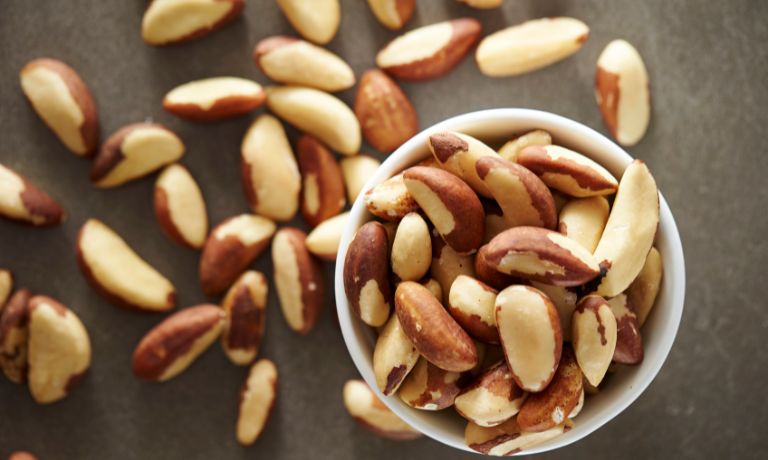
Substitutes For Brazil Nuts
Brazil nuts are a nutritious snack with essential minerals and vitamins.
However, finding an appropriate substitute can be challenging.
Fortunately, several options are available:
Cashews
Cashews are a type of nut native to tropical parts of the Americas. They grow on large trees and have a distinctive crescent shape.
Cashews have a mild, buttery flavor that makes them popular in many cuisines worldwide.
They are often used in recipes as an alternative to other nuts or as an accompaniment to savory dishes.
Cashews can be enjoyed roasted and salted as a snack, blended into nut butter, used in baked goods, or cooked into savory dishes.
They are often ground into cashew meals as an alternative to breadcrumbs or flour for coating chicken and other meats.
Cashews can be chopped and added to salads or stir-fries for a crunchy texture.
Their mild flavor and creamy consistency make them ideal for vegan dishes like cashew cheese or cream sauces.
Cashews are also used to thicken curries and soups and sweet treats like fudge or truffles.
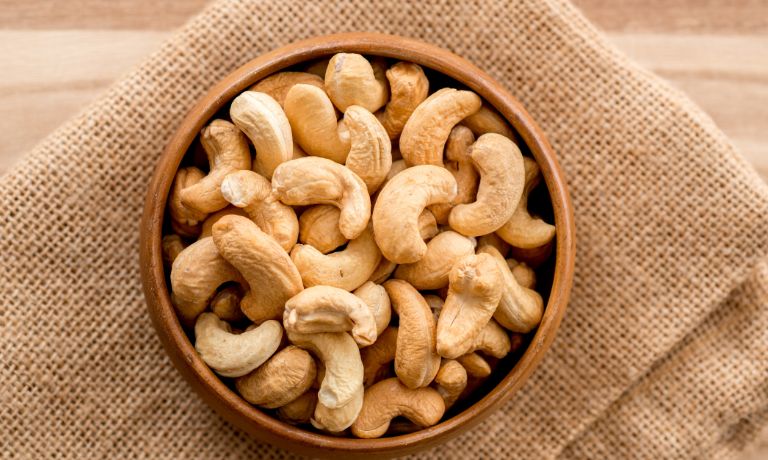
English Walnuts
English Walnuts, or Juglans regia, is the most commonly used type of walnut in many Western cuisines.
They have a mild flavor and a slightly sweet taste with a distinct crunchiness, making them ideal for baking, roasting, and other cooking applications.
English Walnuts are also ideal to use as an ingredient in salads, sauces, and other recipes.
They are also an excellent topping for oatmeal, yogurt, ice cream, and desserts.
English Walnuts can be added to muffins, cookies, cakes, bread, and other baked goods for enhanced flavor and texture.
Finally, they make a great addition to homemade granola bars, giving your snacks an added crunch!
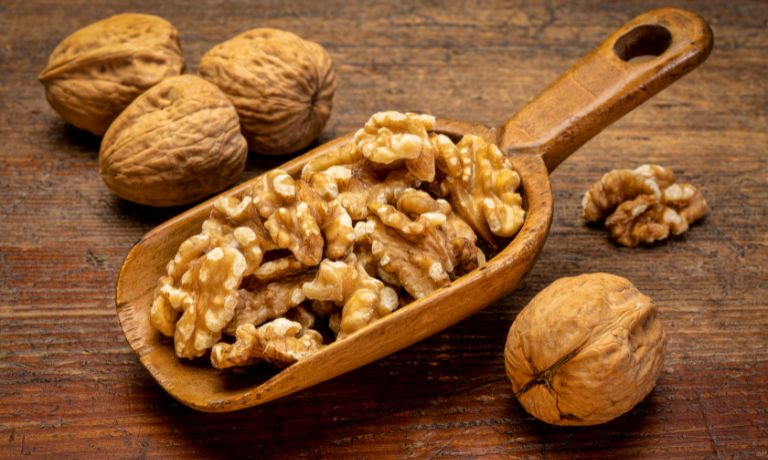
Macadamia Nuts
Macadamia nuts are native to Australia and are one of the most popular worldwide.
They have a buttery, nutty flavor that adds richness to dishes.
You can eat Macadamias raw or roasted as a snack, added to salads or used in baking.
They’re also commonly chopped and used as a crunchy topping for ice cream, cakes and other desserts.
In savory dishes, they add texture and flavor to stir-fries, curries, soups, stews and more.
Macadamia nuts also have healthy fats, dietary fiber and minerals like iron, magnesium and zinc.
They can be expensive, but a little goes a long way in adding flavor to any dish.
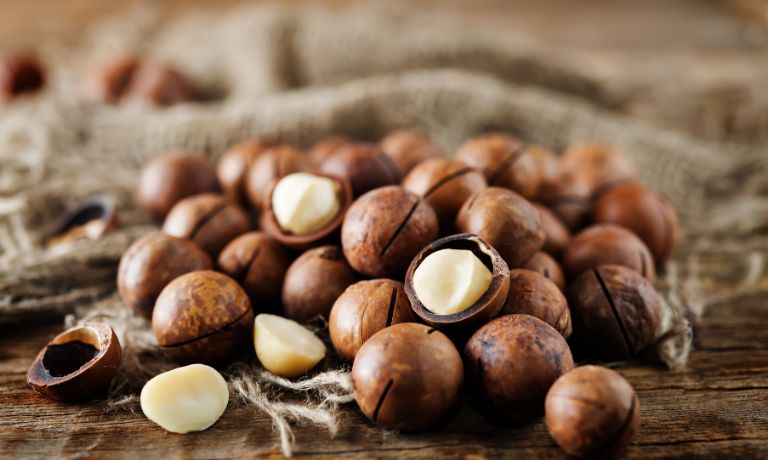
Pili Nuts
Pili nuts are native to the Philippines and have a buttery and sweet flavor.
They are often used in cooking as an ingredient in desserts or snacks such as leche flan, bibingka, and turrones de pili.
You can eat raw or roasted Pili nuts, which are also popularly used as a coating for fried foods like turon or camote cue.
The nuts can be ground in sauces, soups, bread, or desserts like biko.
In addition to their flavor and texture, Pili nuts also contain healthy fats such as omega-3 fatty acids and monounsaturated fat.
They are also a great Vitamin E, magnesium, potassium, zinc and selenium source.
Pili nuts can be bought at local markets or online in raw and roasted forms.

Pistachio Nuts
Pistachio nuts are seeds of the Pistacia vera tree, native to the Middle East and parts of Asia.
These nuts are small but powerful, providing an excellent source of protein, fiber, vitamin B6, potassium, and healthy fats.
In the kitchen, pistachio nuts are a versatile ingredient that can be used in various ways.
You can eat them raw or roasted and salted as an easy snack.
They also make for delicious toppings on salads, cereals, yogurt parfaits, and ice cream.
Pistachios can be chopped and added to muffins, cookies, and other baked goods for a nutty flavor.
Ground pistachios are often used as a coating for fish and chicken dishes, and they can also be incorporated into sauces or pesto to create unique flavors.
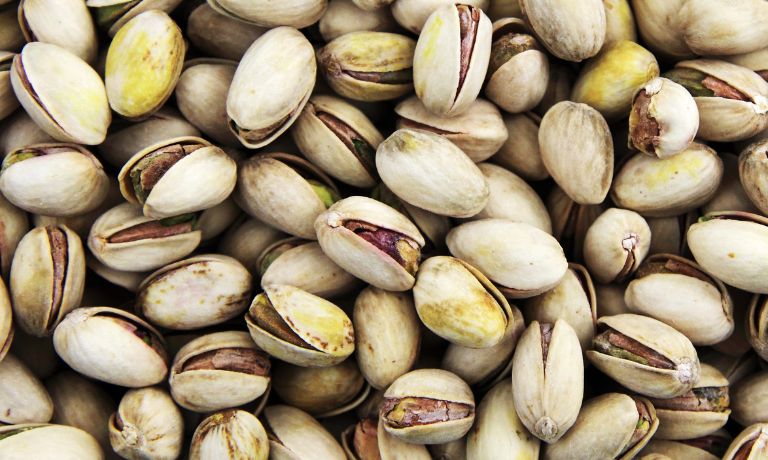
FAQs
Can Walnuts Replace Brazil Nuts?
Yes, walnuts can be used as a replacement for Brazil nuts in recipes.
Walnuts are an excellent source of healthy fats and nutrients, and they have a similar texture and nutty flavor to Brazil nuts.
They can also be chopped or ground up to replace the texture of Brazil nuts in dishes, so feel free to use them as a tasty replacement.
Can Almonds Replace Brazil Nuts?
Yes, you can replace Brazil nuts with almonds when cooking or baking.
Almonds are a good replacement for Brazil nuts because they have a similar taste and texture.
However, almonds may not provide the same nutritional benefits as Brazil nuts.
Can Cashews Replace Brazil Nuts?
Yes, cashews can be used as a replacement for Brazil nuts in many recipes.
They are almost identical in flavor and texture, cashews are also more widely available than Brazil nuts.
Conclusion
Brazil nuts are a great addition to any dish, but finding the right substitute can be difficult.
Fortunately, several options provide similar flavors and textures without compromising on taste.
Cashews, English walnuts, macadamia nuts, pili nuts and pistachio nuts are all great alternatives.
Each option offers a unique flavor, texture and nutritional benefits, making them a great addition to any dish.
With careful consideration of the desired outcome, any of these nuts can be used as an effective substitute for Brazil nuts.

